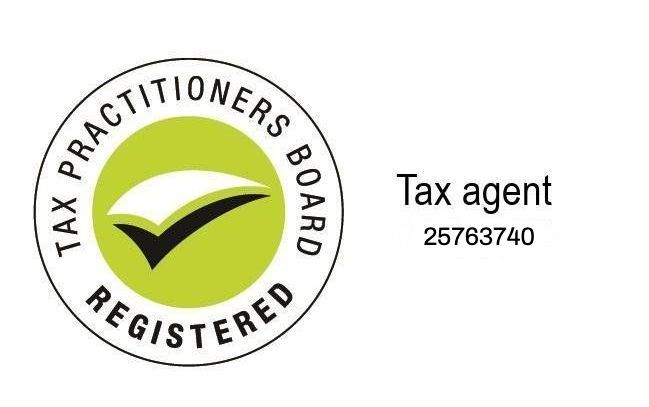What Is a Corporate Trustee (and Why It Matters)
Vania Wang • November 17, 2025
What Is a Corporate Trustee (and Why It Matters)

When setting up a trust, whether for your business, investments or family, one of the first and most important decisions is who will act as the trustee.
The trustee is responsible for managing the trust’s assets, keeping records and making decisions in line with the trust deed. Choosing the right trustee structure can affect how smoothly the trust runs, how protected your assets are, and how easy it is to manage over time.
Many people choose to use a corporate trustee. A company created specifically to act as trustee for the trust.
What Is a Corporate Trustee?
A corporate trustee is simply a company that acts as the legal owner of a trust’s assets, managing them on behalf of the beneficiaries.
Rather than individuals personally holding assets, the company holds them in its capacity as trustee. The company’s directors make decisions for the trust, but the company itself is the legal entity that owns and controls the assets.
For example, a family trust might appoint Harbourview Pty Ltd as its trustee. That company holds the trust’s assets in its name and manages them according to the trust deed. Not for its own benefit, but for the benefit of the trust’s beneficiaries.
Why the Trustee Structure Matters
The structure you choose for your trustee affects how your trust operates day-to-day, how decisions are made and how well your personal assets are protected.
A well-structured corporate trustee can:
- Keep personal and trust assets clearly separated
- Limit personal liability
- Simplify record-keeping and reporting
- Provide continuity even when directors change
- Present a more professional structure for banks and business partners
These are the reasons many Australians choose a corporate trustee, particularly for family trusts, business trusts and investment structures.
Key Benefits of Using a Corporate Trustee
1. Clear Separation of Assets
Using a company as trustee ensures trust assets are held separately from personal or business assets. This helps avoid confusion and reduces risk if disputes or liabilities arise.
2. Limited Liability
Because a company is a separate legal entity, the directors are generally not personally liable for the trust’s obligations (within legal limits). This provides added protection for individuals.
3. Continuity and Stability
Unlike individuals, a company doesn’t retire, pass away or relocate. A corporate trustee continues indefinitely and only the directors may change. This provides long-term stability for the trust.
4. Professional Presentation
Having a company as trustee often appears more formal and credible, particularly when dealing with banks, lenders or external investors.
5. Easier Succession Planning
Changes in directors or shareholders don’t require changing legal ownership of trust assets. This makes managing the trust simpler over time.
Corporate Trustee vs Individual Trustees
When choosing how to structure a trust, it’s useful to consider how a corporate trustee compares with individual trustees. With a corporate trustee, the trust’s assets are held and managed by a company, while with individual trustees, the assets are held personally by the people acting as trustees.
A key difference lies in continuity and liability. A company continues to act as trustee even if its directors change, while an individual trustee structure must be updated if someone retires or passes away. Individual trustees also take on personal liability for the trust’s obligations, whereas a corporate trustee generally provides greater protection.
Although a corporate trustee involves higher setup and compliance costs, it can offer longer-term simplicity and a more formal structure. Individual trustees, by contrast, are easier and cheaper to establish but can create more administrative work over time as circumstances change.
Common Questions About Corporate Trustees
1. Should the trustee company do anything other than act as trustee?
No. It’s best practice for a corporate trustee to act only in that role. Mixing trading activities with trustee duties can create confusion and unnecessary risk.
2. What happens if the company is deregistered?
If the trustee company is deregistered, the trust effectively loses its trustee. This can cause serious legal and tax complications, so it’s important to maintain ASIC registration.
3. Can a corporate trustee be added later?
Yes. You can change from individual trustees to a corporate trustee, but it requires formal documentation and updates to the trust deed and asset titles.
4. Does a corporate trustee pay tax?
Usually, no. The trust distributes income to beneficiaries, who pay tax at their own rates. The company’s role is administrative rather than commercial.
Setting Up or Reviewing a Corporate Trustee
Setting up a corporate trustee is straightforward but must be done carefully.
The general steps include:
- Registering a proprietary limited company (Pty Ltd) with ASIC.
- Creating or reviewing your trust deed to name the company as trustee.
- Applying for separate ABN and TFN for the trust.
- Opening a bank account in the name of the company “as trustee for” the trust.
- Maintaining compliance, including ASIC annual reviews and accurate trust records.
Even if your trust is already established, reviewing your trustee structure can be valuable especially as your business or family circumstances evolve.
Why It Matters
A corporate trustee brings structure, protection, and long-term simplicity to your trust.
While it adds a small amount of setup and ongoing cost, it can save time, reduce risk and make administration easier in the years ahead.
If you’re setting up a new trust or reviewing an existing one, it’s worth understanding how a corporate trustee could strengthen your structure.












